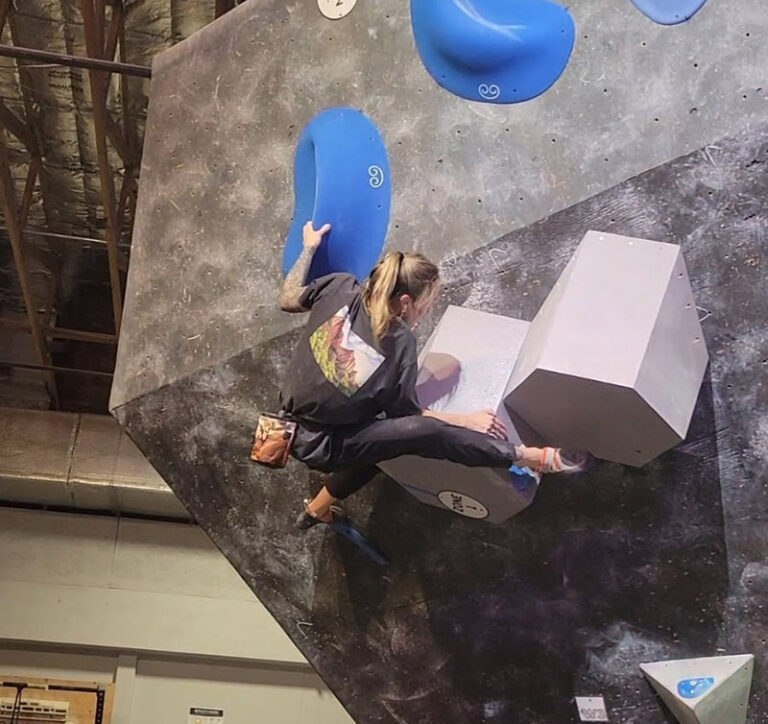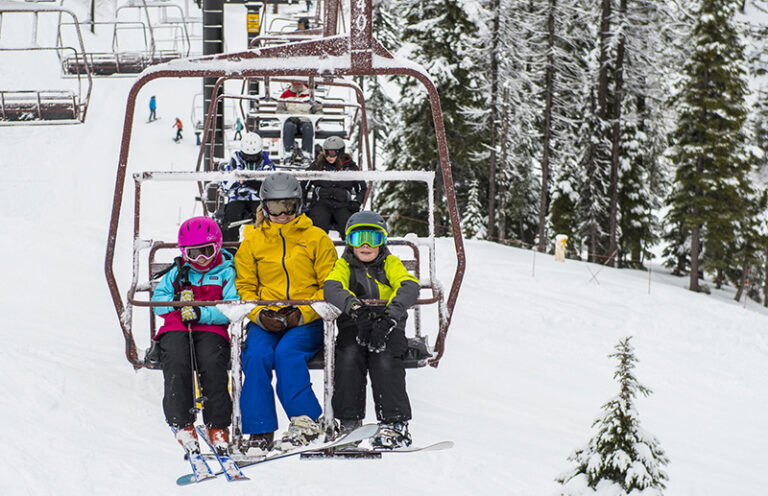First, a story. Brian Smith was a 20-year-old kid in 1989 when he moved from Houston, Texas to Walla Walla, Washington. Just weeks after arriving, he borrowed his dad’s Volkswagen, and with a friend from church, decided to go bombing around in the woods of the nearby Blue Mountains. As he steered the car up Tiger Canyon Road it was getting to be dusk of a late August night so he turned on his headlights. What he saw next is still vivid to this day.
“I came around a little bend in the road when two Bigfoots just stepped right out in front of me. One was about eight-feet tall and one was about seven feet. They were holding hands as they walked across the road, the bigger one leading the shorter one. They just looked like humans covered in hair, more ape than man. The headlights were shining in their eyes and their eyes were shining back yellow. They didn’t seem to care that I was there; they just looked at me and went on their way. I wasn’t threatened at all but I know if they wanted to they could have picked that car up.”
“Two weeks later, I go to the Eastgate Mall here and there’s this display with two life-size mock-ups of Bigfoots, and I was like, ‘Dad, I just saw those, like two weeks ago up in the woods!’ ”
Reports of an elusive, hairy, man-ape roaming the shadowy forests of the Northwest go back over 200 years. Native Americans in the area have passed on stories for generations. Among the Spokane Indians, Bigfoot was known as S’cwene’yti (pronounced chwa-knee-tee), which translates to “Tall, hairy, smells like burnt hair.” Bigfoot advocates hypothesize that the animal is the offspring of an ape from Asia that wandered to North America during the ice. They suggest there are about 2,000 of the creatures walking upright in North America’s woods today.
Although Bigfoot sightings have been reported in all 50 states, it seems the creature has a particular fondness for the Evergreen State. According to the Bigfoot Research Organization (BFRO), more sightings (338) have been reported in Washington than any where else in the nation. “I’ve talked to over 200 people who have seen him,” says Paul Graves, an avid Bigfoot enthusiast from Wenatchee and one of about six investigators in the state of Washington for the BFRO. His job is to follow up on reports of Bigfoot encounters and determine their legitimacy. There is the occasional hoax, he says, like kids from Loon Lake who were running across the highway in a gorilla suit a couple years ago. Some of the reports he’s heard include a man watching Bigfoot look both ways before crossing the road and one log truck driver reported seeing a Bigfoot “grab a Christmas Tree-sized tree, yank it out of the ground and throw it out in the middle of the road.” Graves has never seen the creature himself, but says “I’ve heard them three times this year…” He’s recorded their night screams, which he describes as incredibly loud. During the day, he says, “they use a wood knocking mechanism, a whistling mechanism and a short whoop whoop sound.”
Probably the most famous piece of evidence is the 1967 Patterson-Gimlin film, a grainy 16mm clip which shows a hairy hominid casually strolling across a sandbar in Northern California. It has become to Bigfooters what the Zapruder film is to JFK assassination buffs. After that appearance, interest in the Big Guy soared, becoming a pop cultural phenomenon, peaking in the mid ’70s with films like The Legend of Boggy Creek, Curse of Bigfoot, and Revenge of Bigfoot. By the time he became the Bionic Bigfoot in at least three episodes of The Six Million Dollar Man, he’d secured his position among one of Hollywood’s A-listers.
In Spokane, his shaggy image can still be seen peering over the roof of the Bigfoot Pub and Spokane Community College’s mascot is none other than the Sasquatch himself.
Looking for Bigfoot
On a recent hazy, late summer day, I find myself trailing Brian Smith in my car, trying to keep up with him as he speeds along-Baja-style, around the tangle of washboard dirt roads that penetrate the Weneha-Tucannon Wilderness of the Blue Mountains. His car is invisible in the cloud of thick dust it stirs up. Finally, we get to the spot, not far from where he reported seeing the two Sasquatch seventeen years ago. There we meet Tim Boone, a wiry, energetic 44-year-old Bigfoot tracker from Purvis, Mississippi, who arranged to meet up with Smith after reading about the area. He has never seen Bigfoot, but after years of obsessive research on Bigfoot sightings, including correlating sightings with moon phases, he determined this was the best place for his search. “I think I saw some tracks,” he tells Brian as we get out of our cars. “And I think I may have something on the video, too,” he says, as he hooks up the camera to his laptop screen on his truck. “Right there, see it?” he says, pointing to a small brown spot in the trees. It looks to me like shade.
We set out hiking to check out the tracks Tim saw earlier and to look for other possible signs of activity. After determining the tracks were something other than Bigfoot’s, “probably elk,” Brain says, we continue tromping around for a few hours. “These are where you find good tracks, Brian says, noting a muddy area from an underground spring. As we head back to camp, Tim jokes to Brian, “C’mon man, find us a Sasquatch track.”
Back at camp, there’s a pile of apples, left earlier for bait, and two heat-sensitive cameras set with a range of 60 feet. Tim checks the camera to see if anything triggered them while we were gone. “Two pictures on this one,” he says. The pictures turn out not be Bigfoot photos. Tim later theorizes that the creature is probably “too smart” to be caught by the camera.
As they sit down for dinner, I ask Tim and Brian what brings them out into the middle of nowhere to look for something that many people consider to have no more chance of existence than a flying troll or swimming unicorn.
“Ever since I saw that movie,” Tim says, referring to Sasquatch: The Legend of Bigfoot, “I’ve been interested in finding out what made that scream. Even though I’ve never had an encounter, it’s been like an obsession. He shows me a binder full of reported Bigfoot sightings along with the moon phases for each. “Eighty-five point six percent of all the sightings were within a couple days of the full moon,” he says, “and last night was a full so I think that helps our chances.”
Not all encounters are visual, sometimes you hear him and sometimes you can smell him. “The smell is really bad,” says Tim. “They say it smells like the combination of a skunk, a wet dog, a dead human and a sewer.” Though he’s never had an encounter, Tim’s belief in Bigfoot is unshakeable. “All I can say is get out of your house, get out of your office, go up here in these wood and look for yourself and you’ll find the evidence.”
“I mean, what is wilderness without a monster?” says Brian. “I don’t really think he’s a monster,” says Tim. “I think that it’s one of the only animals on the face of the earth that can reason like a human.”
“I looked him in the eye,” says Brian. “We watched each other. I’m not saying they’re human or animal, they’re in a class of their own. There was just something about them that was awfully intelligent.”
By now it’s dark and the nearly full moon is making its appearance. Brain belts out a couple of Bigfoot calls, “whoooup!………….whoooup!……….whoooup!!” There’s no response. Tim turns on the stereo in his truck, which has “ten speakers.” Brian hands him a CD and says, “here, let’s try this.” As he puts in the CD and cranks it up, I look at the cover and see that it’s Ted Nugent. It’s not classic Nugent, “Cat Scratch Fever,” or even Amboy Dukes. It’s new Nugent and it’s blasting out into the quiet dark of the night forest. “Do you think this will attract Bigfoot?” I yell, straining to be heard over the chainsaw guitar sound. “I don’t know,” says Brian, “but it would attract me.”
Bigfoot and Indians
Stories of Bigfoot were told long before the earliest white man came along. In 1804, a missionary to the Spokane Indians, Rev. Elkanah Walker, wrote a letter back to his Missionary Board of Commissioners, telling of the stories he heard about the creature:
“…Bear with me if I trouble you with a little bit of their superstitions. They believe in the existence of a race of giants, which inhabit a certain mountain off to the west of us…. they say their track is a foot and a half long. They will carry two or three beams upon their back at once…they frequently come in the night, steal salmon from the Indian nets and eat them raw. If the people are awake, they always know they are coming very near by their strong smell that is most untolerable. It is not uncommon to come in the night and give three whistles, then the stones will begin to hit the houses.”
The Colvilles viewed him as a cousin and would toss him unused fish heads to keep him out of their camp. There were stories of interbreeding. One story tells of a young woman who was carried off by a Bigfoot. During her stay with him she became pregnant and when she returned to the tribe months later she gave birth to a son named Patrick. “The main theme among all Northwest Indians is that they viewed Bigfoot as a human being, not an animal,” says Ed Fusch, an anthropologist and author of a book about the relationship of Bigfoot and the Spokane and Colville Indians.
Where Legend Meets Science
While most mainstream scientists scoff at the mere mention of Sasquatch, there are some who are not so quick to dismiss the idea. Dr. Jeffrey Meldrum, a 48 year-old professor of anatomy and anthropology at Idaho State University wants to take the legend and put it under the microscope of science. Meldrum’s interest started when, as a fifth grader at Indian Trail Elementary in Spokane, he went to see the Patterson-Gimlin film at the Spokane Coliseum. Meldrum, who specializes in the evolution of human locomotion and bipedalism, was generally skeptical until he started analyzing some of the footprints. In his lab, he has nearly 200 plaster casts of alleged Bigfoot prints, the largest collection in the nation. After studying the dermal ridges (fingerprints) and the specific foot structure that the prints suggest, he says the evidence is just too intriguing not to explore. “The idea is to take what is perceived by many people as just simply a legendary entity and pose the question, ‘is there any data that indeed suggests that there is more to this than just legend.'”
Meldrum, whose new book, Sasquatch: Legend Meets Science, was just recently released, has put his impeccable academic credentials on the line for pursuing the controversial topic. One professor at his own university, in a recent article, remarked, ” He might as well be investigating Santa Clause.” Meldrum says, “I’m just mystified sometimes by the attitudes of some of my colleagues. I still think it’s one of the most intriguing natural history questions that remains to be resolved.”
The Death Of Bigfoot?
Fifty years ago the modern myth of Bigfoot was born after the discovery of large, mysterious footprints in Bluff Creek California. When Bigfoot enthusiast Ray Wallace died in 2002, his kids announced their practical-joking dad was the man behind the prints. Confessing to an elaborate hoax, they say he used a pair of carved wooden feet to stomp out the oversized tracks. News reports all but reported the death of Bigfoot. Proponents say rumors of the hairy creature’s death have been greatly exaggerated. “This is something that cannot, should not be off-handedly dismissed by simplistic, cynical remarks,” says Meldrum. “I’ve been told, ‘it cannot exist, therefore it does not exist, so why are you bothering with the so called data.’ ”
Any debate about the creature’s existence will invariably lead to the skeptics bottom line question, “where’s the body?” After fifty years, no bones or hair samples have ever been found. Proponents point out that it is rare to ever find the bones of grizzly bears that have died naturally. Like the bear, they say, when they sense they are dying they wander off to hide.
“I’m not trying to prove this to the world, it’s not like a UFO,” say Paul Graves, who also plays guitar and writes songs about Bigfoot for his rock band, Moss Dog. “I mean, this thing is upright, tall and looks like us. To me, it’s so intriguing that there could be something so big that could be related to us and is still out there. It’s mind blowing to me.”
“Something is definitely afoot in the forests of the Pacific Northwest,” writes Robert Michael Pyle in his book, Where Bigfoot Walks: Crossing The Dark Divide. “Either an unofficially undescribed species of hominoid primate dwells there or an act of self and group deception of astonishing proportions is taking place. In any case, the phenomenon of Bigfoot exists.”
“I used to be 90% certain, but after coming up here and listening to people’s stories I’m now 100%,” says Tim Boone. Boone is convinced after hearing multiple first-hand stories that not only does Bigfoot exist, but there would be more acounts of Bigfoots sightings if such reports did not invite intense ridicule from skeptics.
Freud might suggest that Sasquatch is nothing more than a product of our primal fears and collective imagination, a monster made after our own image. Perhaps the words of an old sherpa says it best: “There is a Yeti in the back of everyone’s mind; only the blessed are not haunted by it.” //
Bigfoot Resources:
Jeffrey Meldrum’s recent book Sasquatch: Legend Meets Science is based on a 2003 video documentary of the same name. More information on these projects can be found at http://www.bfro.net/LMS/LMS.asp.
Those looking for additional scientific examination of the Bigfoot phenomenon should check out this 1998 paper available on the web by forensic examiner J. Glickman: http://www.rfthomas.clara.net/papers/nasirpt.pdf. Glickman concludes that Bigfoot’s existence is unlikely but cannot be ruled at this time. The paper includes an interesting list of of Bigfoot-style creatures in Native American oral tradition.
In 2005 the Colville Confederated Tribes erected a 12-foot tall steel Bigfoot statue created by artist Virgil “Smoker” Marchand. The statue can be seen on the Coulee Corridor Scenic Byway atop Disautel Summit, on the Colville Reservation between the towns of Nespelem and Omak. In November 2005 Marchand was quoted in Indian Country Today commenting on his statue. ”It is our aspiration that the sculpture brings back the legends and experiences of our history and culture as it was once shared with us by elders and families. We’re hoping to put together a pamphlet from stories gathered to help the traveler better understand our culture.” Anyone wishing to contribute stories is asked to send them to Virgil MarchanD, Planning Department, P.O. Box 150 Nespelem, WA 99155.
By Dan Egan
[Feature photo courtesy of DHC]













